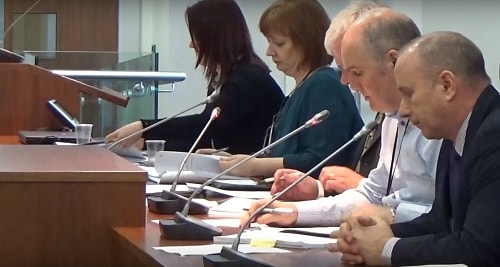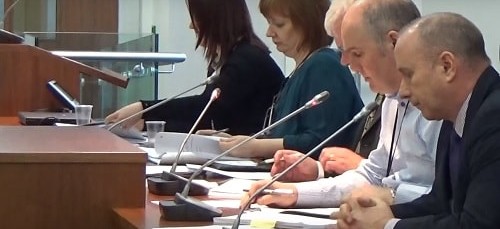£110,000 Community Fund grants scheme now open for expressions of interest from groups for waste prevention, reuse, recycling or carbon benefits projects in Merseyside and/or Halton
Please accept YouTube cookies to play this video. By accepting you will be accessing content from YouTube, a service provided by an external third party.
If you accept this notice, your choice will be saved and the page will refresh.
Merseyside Recycling and Waste Authority public meeting of 5th February 2016 (where councillors agreed to continue the Community Fund for 2016/17)

The author of this piece declares an interest as a customer of his business is employed by one of the Wirral organisations that received a grant from Merseyside Recycling and Waste Authority in 2014/15 mentioned below.
Last Friday afternoon councillors on the Merseyside Recycling and Waste Authority agreed to continue the Community Fund for 2016/17 with an allocation of £110,000.
£57,000 has been set aside for regional (Merseyside and Halton) projects with a maximum award of £25,000 per a project in this category.
£48,000 has been set aside for district level projects (districts are Wirral, Liverpool, Sefton, St. Helens, Knowsley and Halton) with a maximum grant award of £8,000 per a project in this category.
Any unspent monies at the regional level will be reallocated to projects at a district level.
Three Wirral based organisations received grant funding last year (2014/15) through this scheme. You can read the full list of organisations that received grant funding for 2014/15 on Merseyside Recycling and Waste Authority’s website. There is a detailed report about the projects including photos of some of the 2014/15 projects on Merseyside Recycling and Waste Authority’s website (the last photo on the last page of that report includes a photo of former Mayor of Wirral Steve Foulkes and Birkenhead’s MP the Rt Hon Frank Field MP).
Tomorrow’s Women Wirral received £10,000 for their Inspiration Hall project.
Community Action Wirral received £19,982 for their Donate and Create Change project.
Wirral Change received £9,064 for their Too Good To Waste project.
This year the Community Fund is open again for applications from registered charities, not-for-profit organisations (including social enterprises), community, neighbourhood or voluntary groups, faith groups delivering community work, schools, colleges or universities.
It is a two stage grant application process with the first stage being an expressions of interest stage.
Applications are sought for projects that can deliver waste prevention, reuse, recycling and carbon benefits.
A link to the expression of interest form, guidance document and terms and conditions can be found linked from this page on Merseyside Recycling and Waste Authority’s website. This page also has contact details for Merseyside Recycling and Waste Authority in connection with applications for grants.
The deadline for the first stage (expressions of interest) for this two stage grant process is Wednesday 2nd March 2016.
If you click on any of the buttons below, you’ll be doing me a favour by sharing this article with other people.

 While looking through the recent delegated decisions made by Cabinet Members, I came across this
While looking through the recent delegated decisions made by Cabinet Members, I came across this